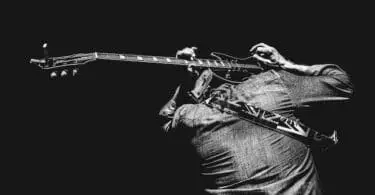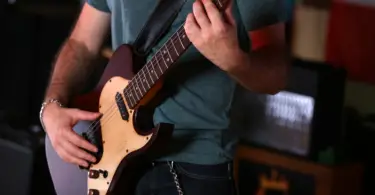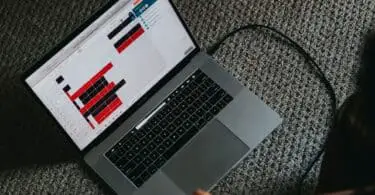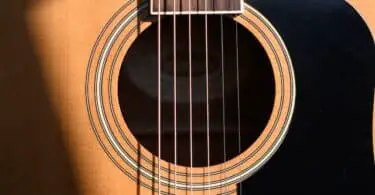In today’s blog, we’ll teach you the guidelines and techniques to easily understand and learn how to fingerpick a guitar. It’s a very popular style of playing the guitar because it sounds very impressive and it opens up so many options of how you want to play your favorite songs!
Guitar fingerpicking is not as easy as you might think it is, but once you get used to it, fingerpicking techniques will come out naturally as you play.
So are you ready to train your fingers? Let’s now begin with the challenge of learning how to fingerpick!
Quick Links
Practicing and Understanding the Right Way to Position Your Fingers
When learning fingerstyle, make sure to practice moving your fingers in the right position and having the right posture every now and then. Below are the FIVE guidelines to help you understand all the techniques needed to position your fingers over the guitar strings.
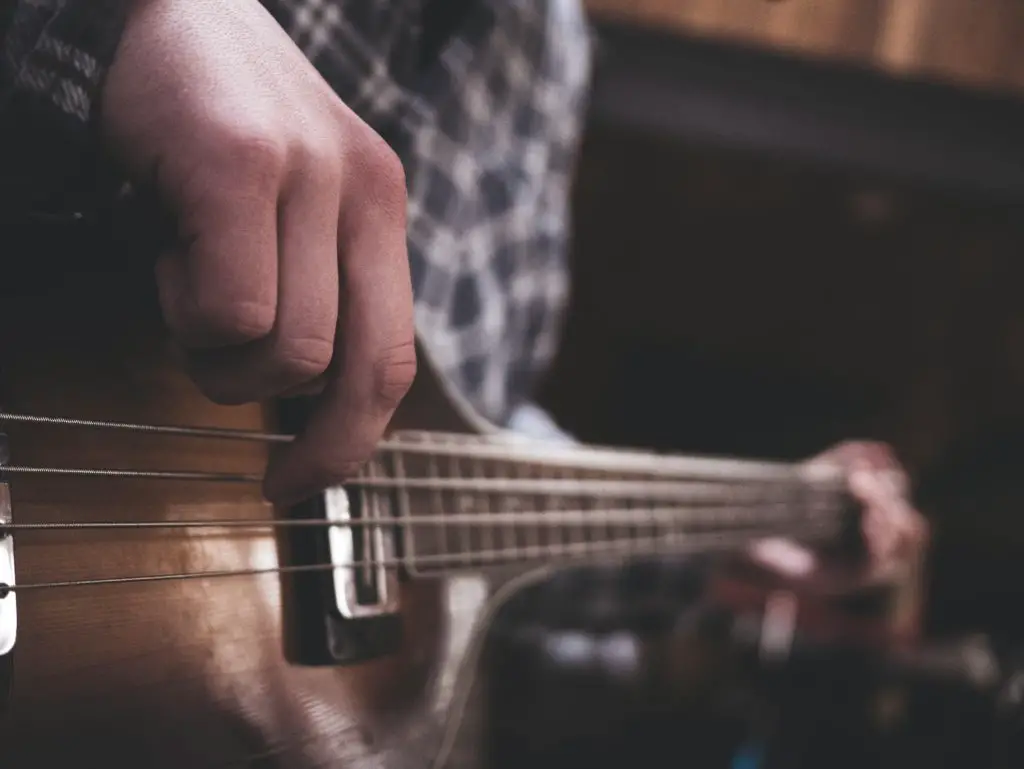
1. The positioning of your hand over the guitar strings
First, place your hand on top of the strings of the guitar. Get accustomed to the positioning of your hand over the guitar strings before you begin studying fingerpicking styles.
For example, put your thumb on the sixth string, then your first finger on the third, then your second finger on the second string, and your third finger on the first string.
Keep your wrist moderately arched to emphasize the muscles of your fingers. While fingerpicking, maintain your arm and wrist as steady as possible. Remember, all motion should be controlled by your fingers and not the arm or wrist.
Several guitarists use the pinky in keeping their hands anchored over the strings and their wrists restricted. Others, however, believe that this restricts their movement. Try it out and discover what works for you, and feeling most relaxed.
2. Bend all of your finger segments
All of your fingers have three joints. Sustain a small bend in every finger joint, as if you were holding a small ball in your hand. Have a relaxed wrist and fingers.
Examine your finger placement. You may need to reposition your hand so that your fingers rest on the right strings.
3. Curl your finger towards your palm
Pick a guitar string by curling your finger towards your palm. Next, flick your finger onto your palm to fingerpick a guitar. All motion should originate from your base finger. Experiment with each of your first three fingers and your thumb.
Before you begin plucking the strings, you should practice the action without playing. It will teach your fingers to move independently of one another and will help you develop muscle memory.
As you begin plucking strings, make sure you reach them from the correct angle. It should not be an issue if you curl them appropriately. However, you should ideally pluck the strings with your fingertips at a 90-degree angle from the strings.
4. Extend your thumb from its base joint
Your thumb may appear to have just two joints, but it truly contains three, just like all your fingers. If you reach along the edge of your hand as you extend your thumb inwards to your palm, you’ll discover it. The motion of the base joint, which is near to your wrist, gives your thumb its strength.
The thumb will be in charge of fingerpicking the sixth and fifth strings, the lowest notes in any chord. Make a strong bass drone that lays beneath the upper notes by using a complete movement.
5. Practice some simple fingerpicking techniques
Fingerpicking exercises improve your fingers’ ability to move independently and prepare you to master fingerpicking patterns. Simple strumming chords will get you familiar with the action – no need to look for specialized workouts.
You can, for example, try fingerpicking a G chord following by a C chord. Stroke the chord’s lowest note using your thumb, the next lowest with your first finger, the next with your second finger, and the highest note with your third finger.
Do Fingerstyle pattern exercises
Once you have learned the correct positioning of your fingers and bending it segment by segment, the next thing to learn is the patterns on how you will play fingerstyle. Below are the TWO important guides that will surely help you learn with ease.
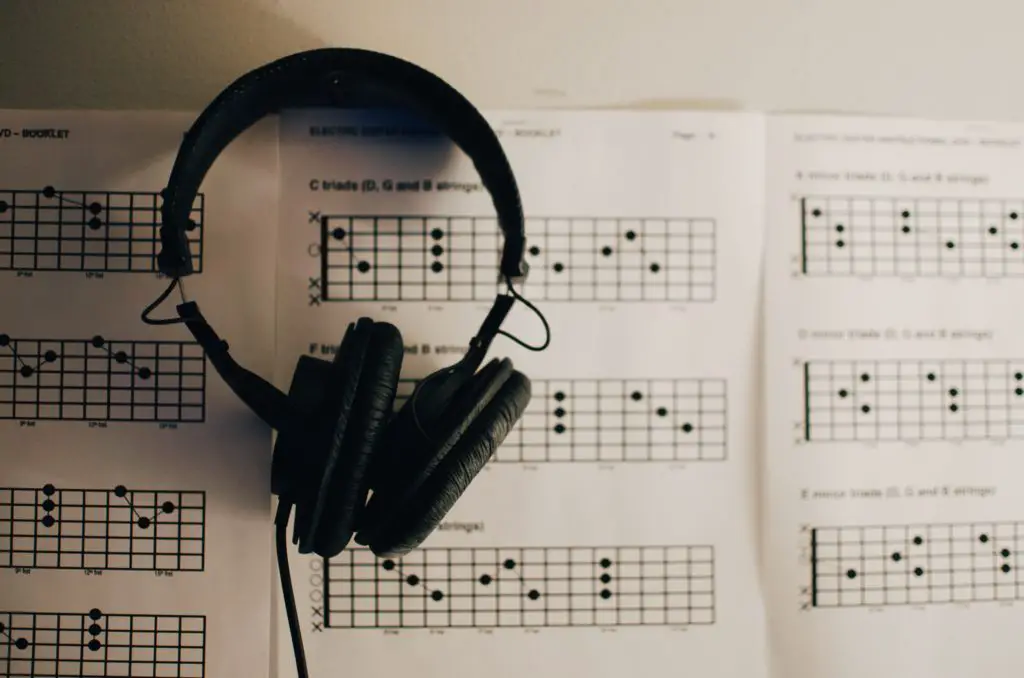
1. Maintain a stable bassline using your thumb
All fingerstyle patterns have a continuous bassline plucked with your thumb on your guitar’s sixth and fifth strings. Alternate in between the lowest notes of two or three chords till you have a continuous drone running. This fundamental pattern is the “alternating bassline” pick, and it is one of the simplest fingerpicking patterns to learn.
When your thumb is powerful enough, you may begin to add the other chord notes using your other fingers. You may also just play the bassline, especially if you support a singer or perform with a full band. Again, experiment with different sounds until you find one you like.
Generally, you should apply a bit more force using your thumb compared with your other fingers. Otherwise, the chord’s upper tones will tend to dominate the root note.
2. The fundamental fingerpicking method
For a song that is in 2/4 or either 4/4 time, use the fundamental fingerpicking method. The fundamental fingerpicking pattern is similar to the exercises you completed while learning to fingerpick chords. For example, use your thumb to pluck the sixth string, your first finger to pluck the third string, your second finger to pluck the second string, and your third finger to pluck the highest note on the first string.
Begin with the chord’s bottom note, then go on to the other notes. Play the chords in this manner throughout the song. You can also switch between strumming and fingerpicking to emphasize specific chords in an arrangement.
Practice fingerpicking techniques
Practicing fingerpicking techniques every day is the key to mastering every fingerstyle a guitarist may learn. However, remember that planning to study this style without a goal is useless. Instead, you should set a goal to learn techniques in a certain timeframe so you will be eager and determined to train yourself. Below are the FOUR guides in understanding fingerpicking techniques.
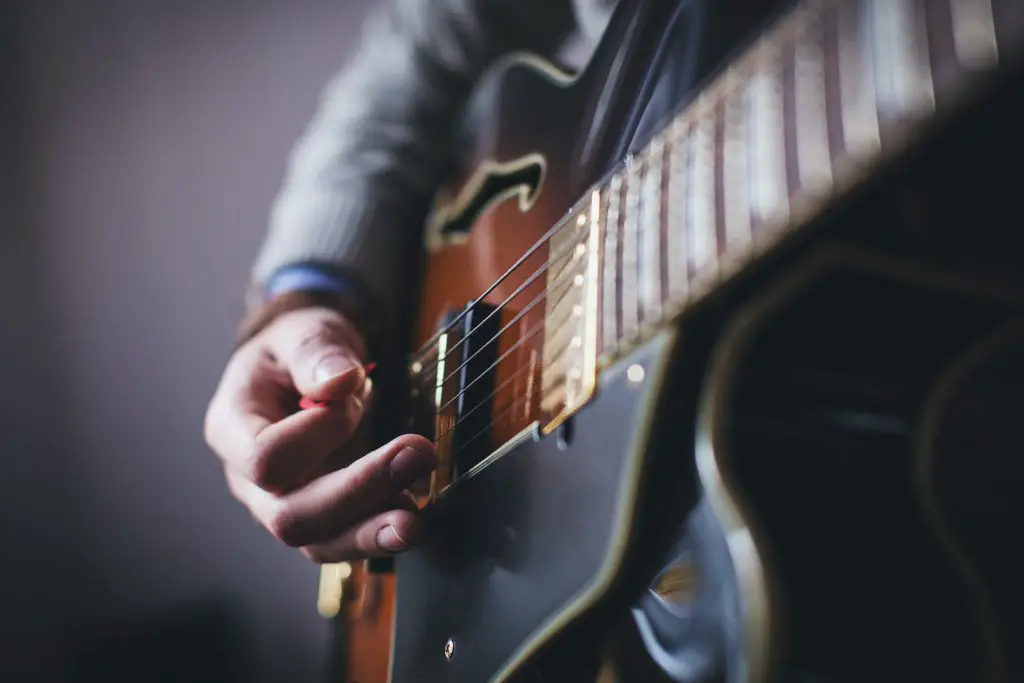
1. Develop your muscle memory
To develop muscle memory, train every day. It is doubtful that you will pick up fingerstyle guitar patterns just after a few tries. Make an effort to practice fingerpicking for at least 10 to 15 minutes every day.
Warm-up with chord exercises to get your fingers comfortable playing the fundamental pattern. Then you may tackle some of the more difficult designs.
Play tunes you already know how to play extremely well when practicing your fingerpicking skill. This way, you will not have to search for chords and may concentrate only on your fingerpicking.
2. Make the bass note stronger than the other tones
On any guitar chords, the treble notes outweigh the bass notes. If you wouldn’t pluck the bass string stronger than other strings, the high strings will drown them out.
Try plucking bass notes using your thumb till you can hit them hard enough for them to ring out for a longer period. It will offer you more power and range. Also, alternating bassline picking is a great way to strengthen your bottom notes.
3. Intensify the rhythm of the song and develop chords around it
Look for tones in your guitar accompaniment similar to the song when you are backing a vocalist. Then, as you play, prioritize certain notes by adding notes or chords around them.
Because this style of play is more difficult than other fingerpicking approaches, it may take some time to get used to. However, with practice, you will learn how to truly improve the song’s melody.
4. Use a metronome
To establish a constant rhythm, use a metronome. While you were strumming, you could have had no trouble maintaining time. Once you start fingerpicking, it’s easy to lose sight of the rhythm, particularly when experimenting with melody notes and bringing accents and richness to the tune. Use a metronome to verify you’re keeping accurate time.
It might be beneficial to align the bottom note with the metronome. You’ll be in time no matter what you do in the margins if your bass note is in time.
Conclusion
Guitar fingerpicking is as important as strumming as you also need to incorporate different flavors into your style while playing your guitar. Also, all guitarists widely use fingerpicking, so their guitar performance will not be plain and boring.
Learning this is not that easy, but with full determination, you will be able to fingerpick in no time. Set your goal, follow these guides and of course, exert all your effort and passion. You can do it!

